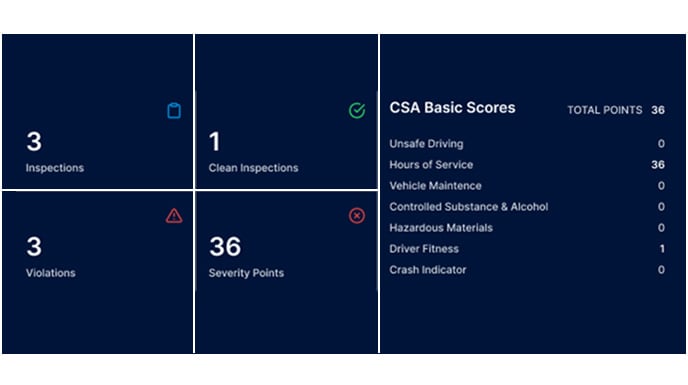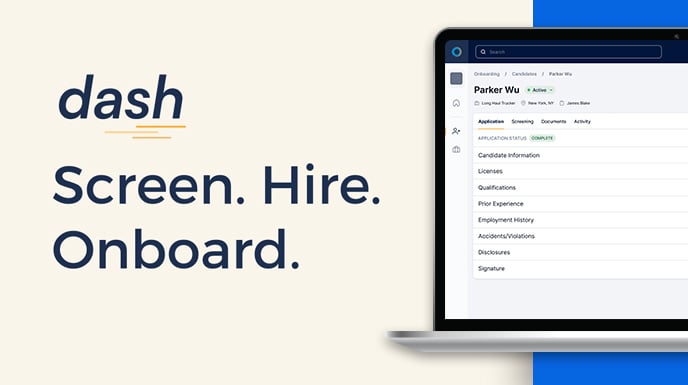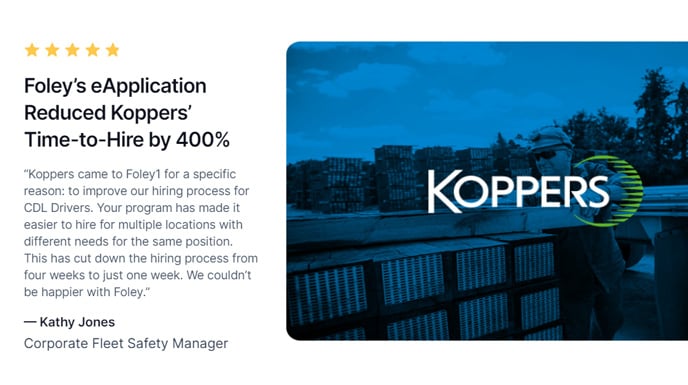3 Types of FMCSA Safety Investigations & How to Prepare for Them

Being proactive, not reactive, when it comes to DOT audits can make or break the chances of your company passing them.
Being a federally regulated motor carrier or company with regulated drivers comes with a slew of responsibilities—one of the most important being a safe and reliable business, especially in the eyes of the Federal Motor Carrier Safety Administration (FMCSA).
The agency conducts numerous "checks" on the companies it regulates to ensure they're meeting the guidelines put in place to keep our roadways safe, often referred to as Federal Motor Carrier Safety Regulations (FMCSRs).
Three of the most common interventions the FMCSA conducts are as follows:
- FMCSA New Entrant Safety Audits
- DOT Onsite Audits
- DOT Offsite Audits
Other than the New Entrant Safety Audit, these investigations can occur once your company has reached specific intervention thresholds, often resulting from bad Compliance, Safety, and Accountability (CSA) scores, failed roadside inspections, or accidents.
Preparing for federal interventions before you're notified of an offsite audit with only 48 hours to prepare is the key to passing them with flying colors. In this article, we'll cover when each of these audits can happen, what's involved, and how to prepare for them.
FMCSA New Entrant Safety Audits
In the eyes of the FMCSA, companies that have successfully registered for a USDOT number and/or an Operating Authority (MC Number) are considered "new entrant carriers" during their first 18 months of operations.
During this time, companies are closely monitored by the FMCSA and are notified of their safety audit via written letter or email.
New Entrant Safety Audits can occur in any of these three formats:
- Onsite - The auditor will complete the audit at your place of business.
- Offsite - The auditor will complete the audit at a designated location other than your business.
- Online - You will be required to submit the requested documents to the FMCSA Safety Measurement System (SMS) portal.
No matter when or where the NESA takes place, companies can expect to provide any or all of the following documents:
- List of active drivers
- List of active commercial vehicles
- Proof of DOT drug and alcohol testing program enrollment
- Active driver negative pre-employment drug test results
- Active driver pre-hire motor vehicle report (MVR)
- Active employees' commercial drivers' licenses (CDLs)
- Active drivers' medical certificates
- Previous 30 days of driver logs
- Proof of insurance
The best way to prepare for the NESA is to have all the above documentation readily available in a digital format. That way, you'll be ready for either an in-person or online audit. Plus, you'll be well on track toward meeting your federal recordkeeping requirements!
DOT Onsite Compliance Audits
During an onsite audit, a safety auditor will visit your place of business to verify that you have basic safety management controls in place to comply with FMCSRs.
They will request documents related to drivers and vehicles, as well as general operating procedures and recordkeeping requirements. Normally, companies are given 4 to 6 weeks to provide all the requested paperwork, but the timeline can vary—and it's often not in the company's favor.
A DOT review is divided into six inspection categories:
- General - Proof of insurance and safety training
- Driver - Driver qualification files
- Operational - Hours of Service FMCSRs
- Vehicle - Inspection, repair, and maintenance program
- Hazardous Materials - Proof of hazardous materials transport training
- Accidents - Register of DOT-recordable accidents
If you're selected for an onsite audit, you must have all the required documentation ready for the auditor to review on your scheduled day. If not, you could be cited for acute or critical violations, owe thousands of dollars in fines, and be placed out of service until you've proven the violations have been corrected.
Check out the Foley DOT recordkeeping checklist that includes all the documents you may need to present during a DOT audit.
DOT Offsite Compliance Audits
Companies called on for an offsite audit will be required to electronically submit the information requested by an investigator.
Offsite DOT audits require companies to present the same documentation as an onsite audit; however, they must be in a secure, digital format. This means paper files are NOT acceptable.
Both onsite and offsite DOT audits can result in one of three safety ratings:
- Satisfactory — The best rating, which is given to companies that have proven to have functional and acceptable safety management programs in place.
- Conditional — This rating is given to companies that do not have adequate safety management controls in place or have failed to follow some safety protocols. As a result, their insurance premiums are likely to increase (or securing insurance could become close to impossible), and business partners could be wary of working with them due to the risk it places on their hard-earned reputations.
- Unsatisfactory — This rating is designated to companies that have failed to implement or upgrade compliant safety protocols. It signals that the FMCSA previously determined that the companies are unfit to continue operating in interstate commerce. To continue operating, companies must make necessary safety improvements in 45 to 60 days, depending on the company type, to continue operating.
Achieving the ultimate Satisfactory rating should be every business' goal, and doing so is easier with DOT compliance software that does the all-too-important audit preparations for you.
Be DOT Audit-Ready Every Day with Foley
If your drivers have been involved in DOT-recordable accidents, you have a poor CSA score, or any of your CMVs have failed a DOT roadside inspection, your company has a higher risk of being audited.
But if you're not sure if any of these factors apply to your business, Foley's Audit Risk Monitor (ARM) report can help you keep track of your CSA score and other safety data that impacts your audit risk.
From preparing digital driver files for each of your CMV drivers to ensuring you're enrolled in a DOT drug and alcohol testing program, Foley's DOT compliance software gets your company on track toward better DOT audit preparedness.
Don't leave your company's likelihood of facing (and passing) a DOT audit to chance; connect with a Foley compliance expert today! We're ready to schedule a FREE software demo with your safety and compliance managers now.
Related Articles
All About Expedited Action: DOT Safety Audit Red Flags
Offsite Audits: The Present & Future of DOT Audits
FMCSA Data Shows That Offsite Audits are Here to Stay
.png)




